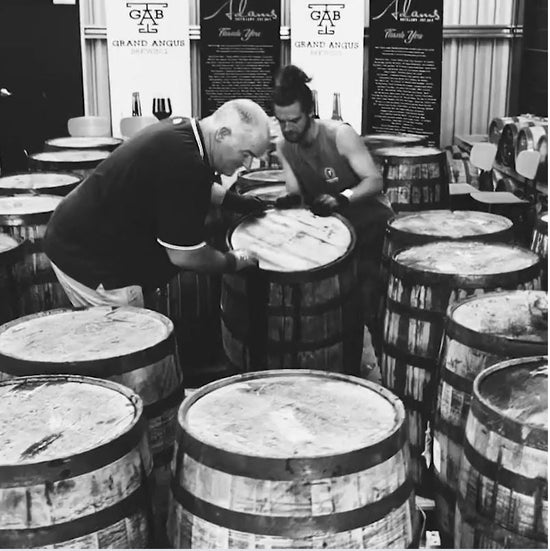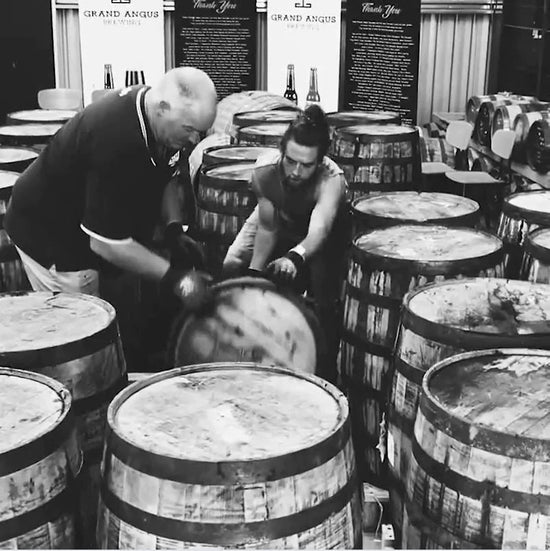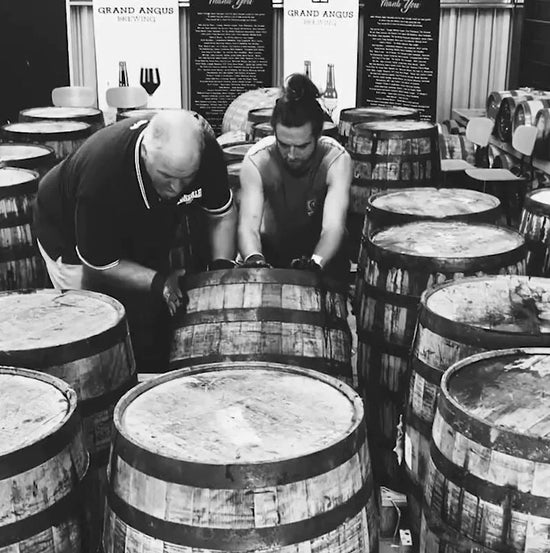The Melding of Art & Science
Every step of our whisky making process is integral to forming the character of our spirit.
From the barley selection to the milling process through to our Tasmanian custom-made mash tun and handmade copper pot still to Adams unique "slosh" ageing process.
This carefully considered approach to distilling is committed to exciting flavour creation.
The Whisky Making Process
Milling - Mashing - Fermenting - Distilling - Maturing - Bottling
The Whisky Making Process
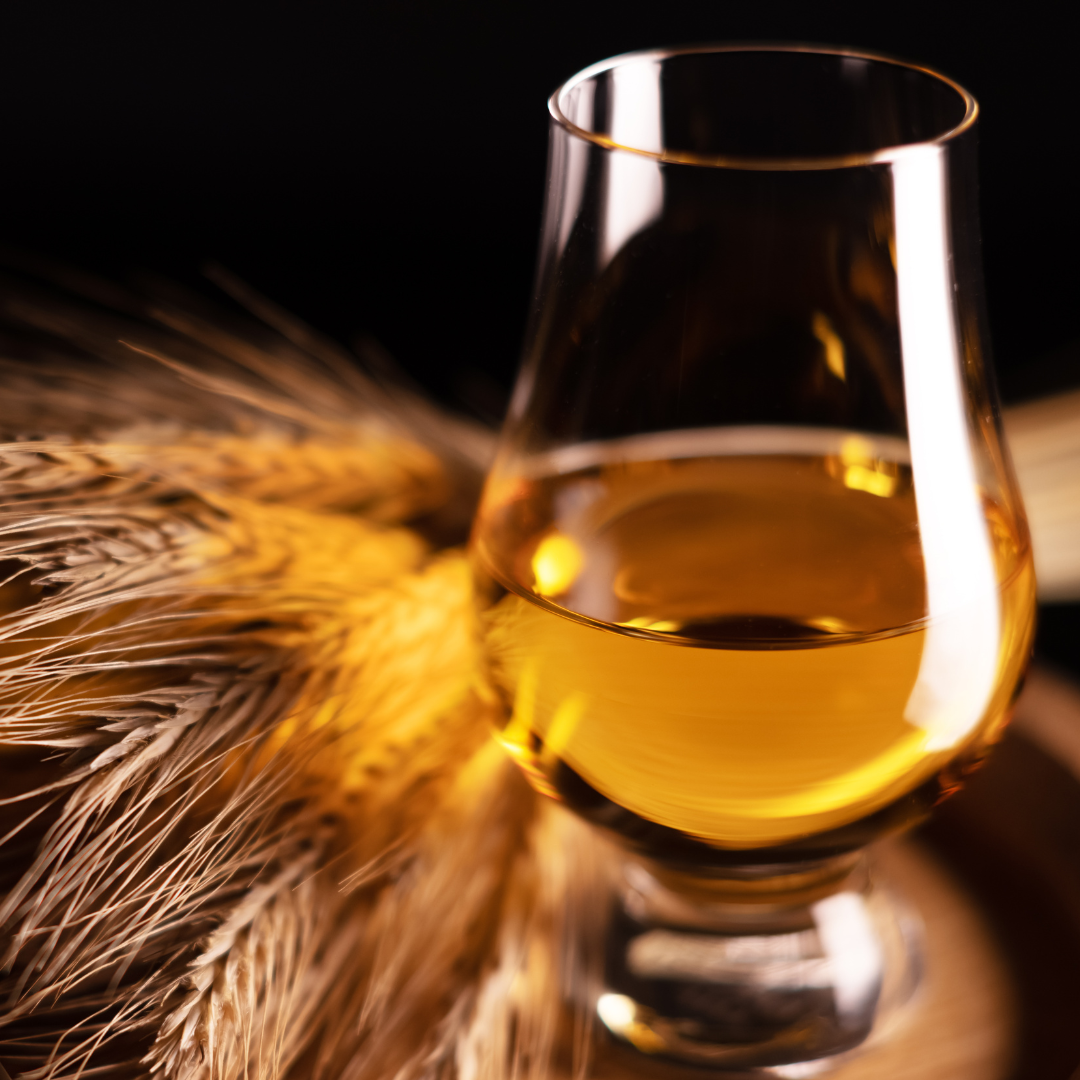
Every whisky is made the same - Mashing, Fermentation and Distillation - But every distillery has its own unique style.
We use locally grown barley for our house style single malt whisky. Our ‘speciality grain bills’ over the years have included Pilsner malt, classic Tasmanian barley, Roasted/Crystal malt, a heavily roasted barley that gives coco and chocolate flavours and German barley smoke with Beachwood, this gives a more of a smoked scent and taste.
We have also grown our own Estate barley and the First Release is scheduled for December 2022.
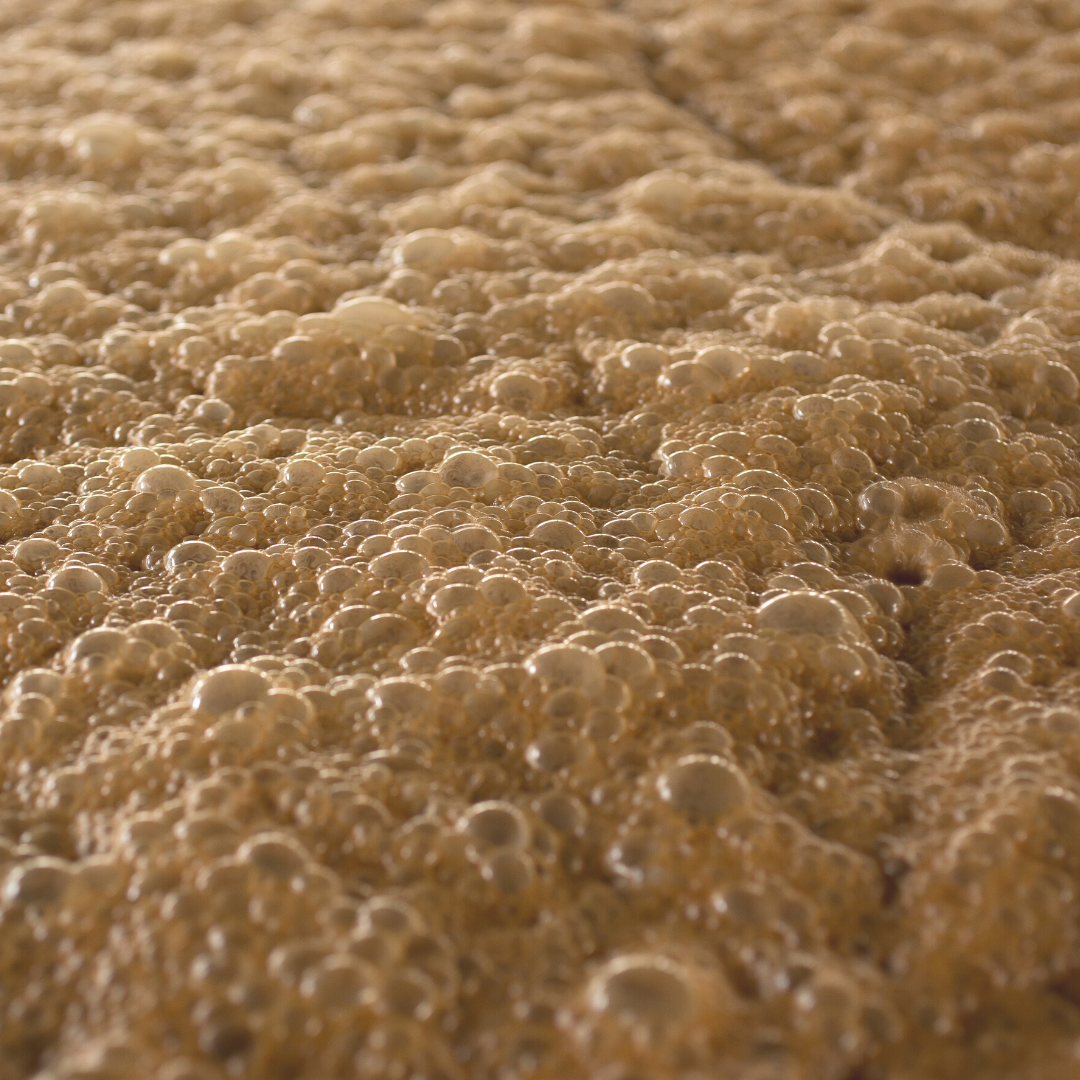
Mashing and Fermentation – The Foundation
The first stage of the whisky making process, known as "mashing", involves steeping and gently stirring coarse ground malted barley (the grist) in pure water heated to 60-65˚C, to activate enzymes that develop during the malting process. The wash, now saturated with the sugars (starch) from the grain drains through the grain bed via the perforated false floor and is transferred through a cooling system to the fermenter.
Yeast is then added to the wash (which has been cooled to 15-20˚C) and gently stirred through. The mixture is now allowed to ferment for 4 to 7 days to create the desired complexity and flavour depth. This fermentation length is dependent on the style of whisky being produced. Once fermented, the wash still is charged with the contents of the fermenter.
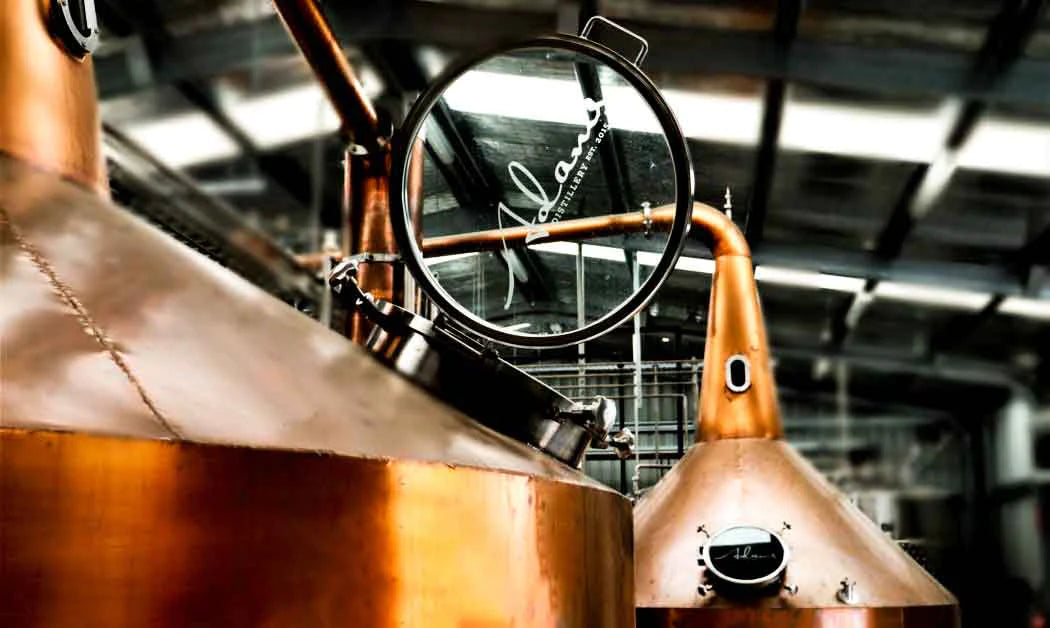
Distillation – The Creation of Spirit
This first stage of distillation strips alcohol from the wort, to produce “low wines” containing approximately 25% ABV (Alcohol by Volume). Each stripping run (wash run) provides about 2,500 litres of low wines, as the product of the 10,000 litres of wash we commenced with, ready for the Spirit still.
The Spirit still is charged with the 2,500 litres of low wines and the heads and tails from the previous spirit run, approximately 1,200 litres plus sufficient water to achieve an ABV of 28%, the desired strength to extract a clean, high-quality spirit in our process. The first five litres of distillate collected off the Spirit still is discarded as waste, and the collection of the “heads” begins.
The heads, representing as much as 3% (will vary run to run) of the charge volume, are now collected, and the distillate is taste tested regularly until a distinct, pleasant flavour change is identified and the collection of the "heart" of our distillate begins.
The distiller carefully controls the distilling process to optimise the vapour's contact with the copper. This is crucial to producing the desired spirit which leads to producing a high-quality whisky.
The final cut is made when the samples of the distillate begin to taste less than that deemed optimum by the distiller. The tails are collected into the tank containing the heads and are redistilled in the next spirit run.
Water is added to the hearts to make the ABV 63.4% and yield “new make” ready for barrelling.
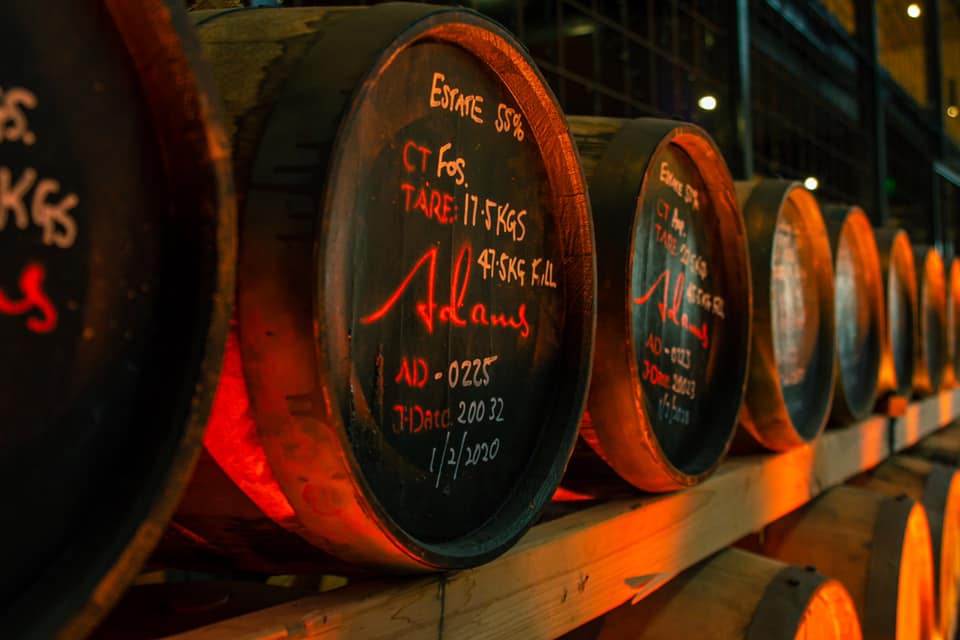
Maturation – When the magic happens
We carefully pair our Tasmanian spirit with character-giving casks that will complement and evolve the spirit during maturation. Over time our highly skilled distillers draw samples to evaluate the progress of the spirit’s evolution.
When the time is right, the distiller will determine when the spirit is ready to be released from its cask and bottled.
When creativity, experimentation, and taste fuse into one
Our "Sloshing process"
In the spirit of innovation and commitment to quality, months of experimentation conducted
by co-founder Adam Pinkard led to the creation of our “sloshing process”.
The matured spirit after implementing the sloshing process is incredibly rich in flavour, colour, and aroma. And its cleanliness on the palate was surprisingly unexpected and welcomed. The entire process was an impressive discovery, and the Adams knew they were onto something.
The ensuing years have seen the sloshing process become integral to our whisky-making process.
This is, in part, what makes Adams whisky so special and puts the brand on the global stage.




